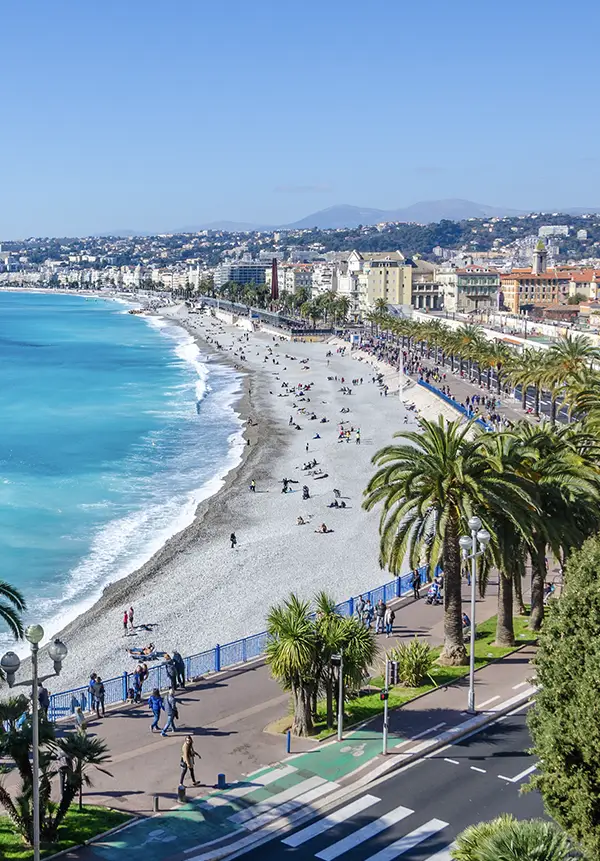MUSIC & SOUND DESIGN
Create soundtracks for films and video games
Admission
High School Diploma +
Entrance Exam
Duration
3
Years
Degree
Diploma
Rhythm
Full Time
then Cooperative education in 2d & 3rd years
Campus
PARIS
Home » Degree Programs » Music & Sound Design
97%
Graduates
(2020/2021/2022 years)
67%
Employment rate of last three
graduate classes
91%
Alumni satisfied with their course (2021/2022/2023 years)
TRAINING
Music & Sound Design degree
Program taught in French
The Bachelor of Music & Sound Design is a professional training program aimed at music and sound enthusiasts wishing to embark on a career as a Sound Designer or as a composer of interactive and linear music.
The program is designed for beginners wishing to learn the trade, as well as for more experienced students wishing to enter the second year directly.
ENTRY REQUIREMENTS FOR Music & Sound Design degree
To enter the first year of the Music & Sound Design course, candidates must have the French baccalaureate (high school diploma or equivalent) and pass the admissions test: interview and presentation of a portfolio.
It is possible to enter directly into the second year of the course depending on the results obtained in the admission tests.
All details are given in the Admissions Guide.
Pedagogy
SKILLS ACQUIRED
- Sound design: Layering design; Sound synthesis
- Music: Music Conceptualization; Music Production; Rendering Quality
- Sound engineering: Recording; Mixing; Sound editing; Computer Science
- Sound Interactivity: Integration; Interactivity; Documentation
TRAINING OBJECTIVES
Acquire the skills of a sound designer to create the sound and musical universe of films and video games:
- To be able to understand an artistic direction, a mixing, a sound creation, a recording
- Master the technique, be fast and creative
- Be able to understand the vision of the production teams and master the technical tools that will be used to bring the project to life
HOW AM I TAUGHT
- Theoretical and practical teaching: lectures, application exercises, practical work, tutorials
- Production of projects: monitoring and supervision by teachers during the realization of projects (end of year project, final major project)
HOW AM I ASSESSED
The school has set up a fair and objective evaluation system:
- Continuous Assessment (case studies, role-playing, presentations, demonstrations)
- Project presentations (end of year project, final major project) in front of a school or professional jury
- Written and oral evaluations in English
- Professional experience report and presentation
INTERNSHIP & INDUSTRY PLACEMENTS
The Music & Sound Design program includes periods of work experience in companies, to develop students’ employability right from the start of their studies.
- Bachelor 1st year: internship or volunteer work possible
- Bachelor 2nd year: summer internship
- Bachelor 3rd year: internship or work experience
diploma
Program
A PROJECT-ORIENTED PEDAGOGY
Year 1
Year 2
Year 3
Full time
EDUCATIONAL CONTENT
Program taught in French
- Music
Musical conception | Writing and orchestration | Applied music | Artistic direction | Initiation M.A.O. | Initiation Mixing | Electronic music | Ambient music | Composition Advertising
- Sound Design
Digital Audio | Introduction to Programming | Sound Synthesis | Post-Production & Foley | Introduction to REAPER | Introduction to Sound Recording | Introduction to Sound Design for Film | Game Engine (FMOD/Unity)
- Culture
Music | Video game | Cinema
- Career Support
- Active English
- Projects
Collaborative projects : Video Games | Human & Citizen Project
- Internship / Work experience
Internship or volunteer work possible
work-study program
EDUCATIONAL CONTENT
Program taught in French
- Music
Writing and orchestration | Applied music | Interactive music | Film music analysis | Music mixing | Art direction
- Sound Design
Digital audio | Programming | Field Recording | Postproduction | Game Engine (FMOD, Wwise, Unity, Unreal Engine) | Sound recording workshops | Sound effects | Cinema mixing (PROTOOLS) | Voice Design & Voice Recording
- Culture
Video games & Cinema
- Career Support
- Active English
- Projects
Cine Week | Game collaborative project | End-of-year inter-curricular project 3D cinema | Internship entry project
- Internship / Professional Experience
Internship
Work-study program
EDUCATIONAL CONTENT
Program taught in French
- Music
M.A.O. | Interactive Music | Art Direction
- Sound Design
Digital audio | Post-production | Game engine (Wwise/Unreal Engine) | Programmation
- Career Support
- Active English
- Projects
Professional Experience Project | Video Game Final Projects | TOEIC: international English test
- Internship / Professional Experience
Internship
EMPLOYMENT
JOB OPPORTUNITIES
Sound Designer | Composer | Sound Editor
Alumni success

More



